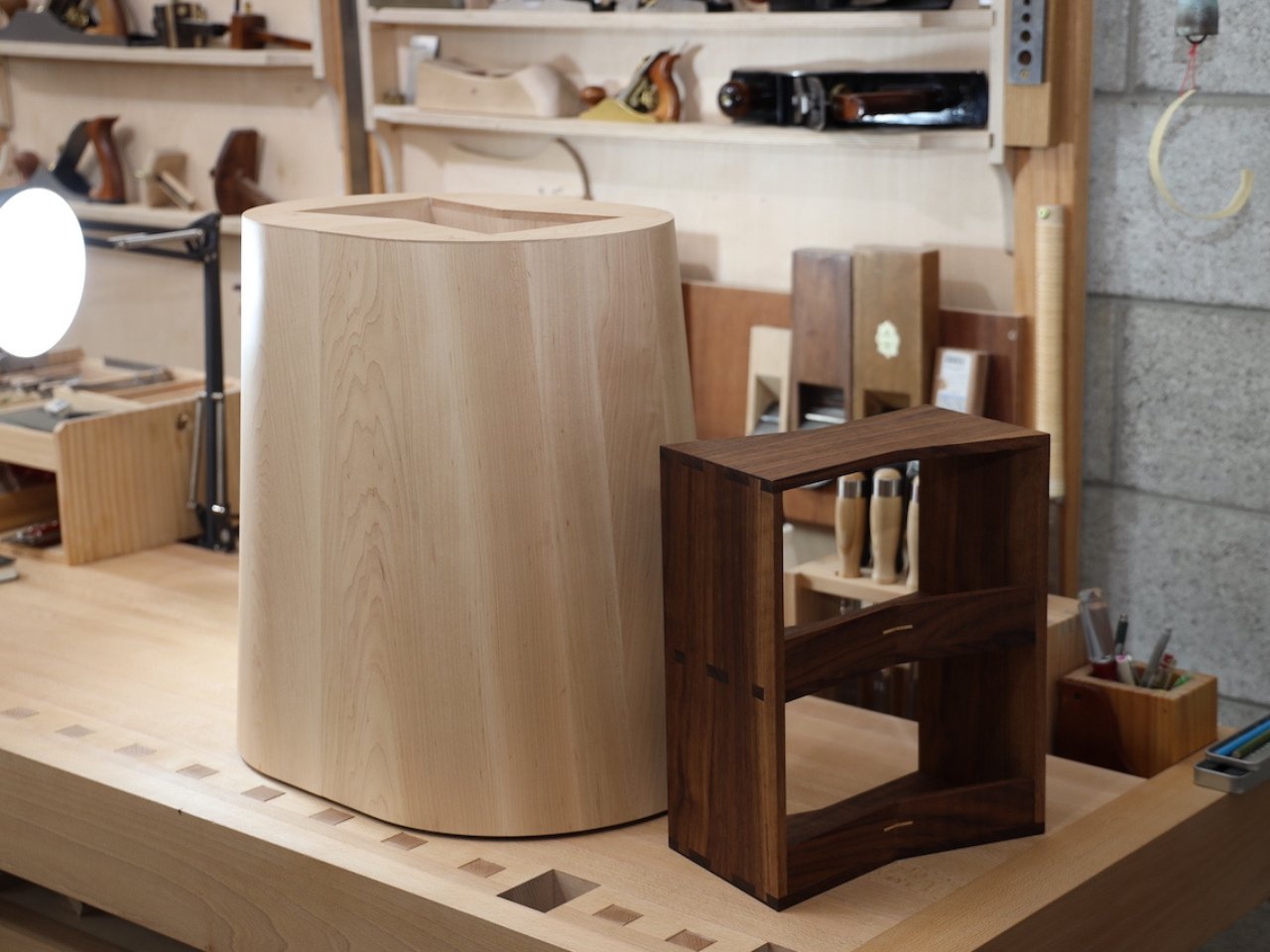In the realm of furniture design, where form often dictates function, the Bugak Stool by Jin Kim of JAYUJAJE offers a refreshing narrative. It’s a piece that transcends mere utility, becoming a sculptural object imbued with the rich heritage of Korean craftsmanship and a delightful element of surprise. It’s a stool, a conversation starter, and a testament to thoughtful design that elevates the often-overlooked details of traditional joinery. The inspiration for the Bugak Stool lies within the elegant framework of traditional Korean hanok homes. Here, butterfly joints, known as nabi-jangbu, play a crucial, albeit hidden, role. These connectors, resembling delicate butterflies, expertly bind wooden beams and masonry, ensuring the structural integrity of these architectural marvels.
Designer Jin Kim recognized the inherent beauty and ingenuity of this understated element and envisioned a way to bring it to the forefront. The result is a stool that initially captivates with its minimalist aesthetic. Soft, inviting curves and a harmonious silhouette are enhanced by the natural warmth of contrasting wood tones, creating a visual texture that feels both grounded and sophisticated. The Bugak Stool effortlessly integrates into a variety of interior styles, from contemporary to eclectic, adding a touch of understated elegance.
Designer: Jin Kim for JAYUJAE
However, the true magic of the Bugak Stool unfolds upon closer inspection. At its heart lies a meticulously crafted butterfly-shaped inlay. This isn’t simply a decorative motif; it’s a direct homage to the traditional nabi-jangbu that inspired the design. With a gentle press, this central butterfly detail subtly depresses before gracefully rising to reveal a hidden interior shelf. This unexpected unveiling introduces an element of playful discovery, transforming the stool into more than just a seat.
This secret compartment adds a layer of personal connection to the Bugak Stool. It serves as a private sanctuary for cherished items, whether it’s a favorite book, a personal journal, or a meaningful keepsake. This interactive feature encourages engagement with the piece, fostering a relationship that extends beyond its functional purpose. It becomes a personal treasure chest, a repository of memories and quiet moments.
The stool’s name, “Bugak,” which in Korean means to reveal, highlight, or elevate, perfectly encapsulates its design philosophy. In traditional Korean architecture, the butterfly joint remains discreetly within the structure. This, however, boldly brings this element into the spotlight. The stool isn’t just held together by this joint; it is visually and conceptually defined by it. The once-hidden connector becomes the star, a testament to the beauty of structural integrity. This design approach beautifully marries tradition with modernity. By celebrating the butterfly joint, she reinterprets age-old craftsmanship for a contemporary audience. The Bugak Stool embodies this fusion, appealing to those who appreciate refined elegance and the joy of uncovering hidden details.
The post Bugak Stool celebrates Korean joinery with a hidden shelf first appeared on Yanko Design.

